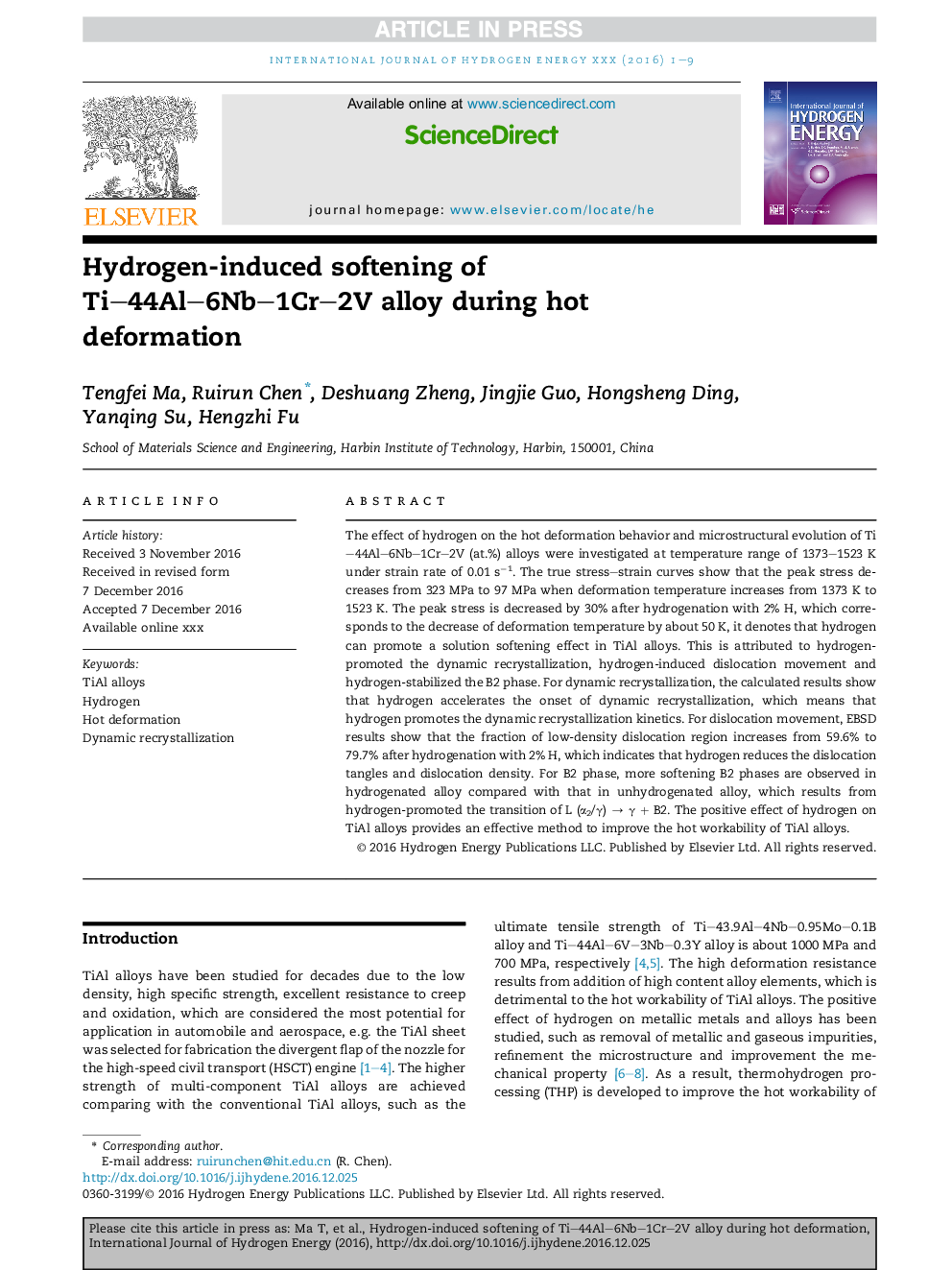| Article ID | Journal | Published Year | Pages | File Type |
|---|---|---|---|---|
| 5148319 | International Journal of Hydrogen Energy | 2017 | 9 Pages |
Abstract
The effect of hydrogen on the hot deformation behavior and microstructural evolution of Ti-44Al-6Nb-1Cr-2V (at.%) alloys were investigated at temperature range of 1373-1523 K under strain rate of 0.01 sâ1. The true stress-strain curves show that the peak stress decreases from 323 MPa to 97 MPa when deformation temperature increases from 1373 K to 1523 K. The peak stress is decreased by 30% after hydrogenation with 2% H, which corresponds to the decrease of deformation temperature by about 50 K, it denotes that hydrogen can promote a solution softening effect in TiAl alloys. This is attributed to hydrogen-promoted the dynamic recrystallization, hydrogen-induced dislocation movement and hydrogen-stabilized the B2 phase. For dynamic recrystallization, the calculated results show that hydrogen accelerates the onset of dynamic recrystallization, which means that hydrogen promotes the dynamic recrystallization kinetics. For dislocation movement, EBSD results show that the fraction of low-density dislocation region increases from 59.6% to 79.7% after hydrogenation with 2% H, which indicates that hydrogen reduces the dislocation tangles and dislocation density. For B2 phase, more softening B2 phases are observed in hydrogenated alloy compared with that in unhydrogenated alloy, which results from hydrogen-promoted the transition of L (α2/γ) â γ + B2. The positive effect of hydrogen on TiAl alloys provides an effective method to improve the hot workability of TiAl alloys.
Related Topics
Physical Sciences and Engineering
Chemistry
Electrochemistry
Authors
Tengfei Ma, Ruirun Chen, Deshuang Zheng, Jingjie Guo, Hongsheng Ding, Yanqing Su, Hengzhi Fu,
